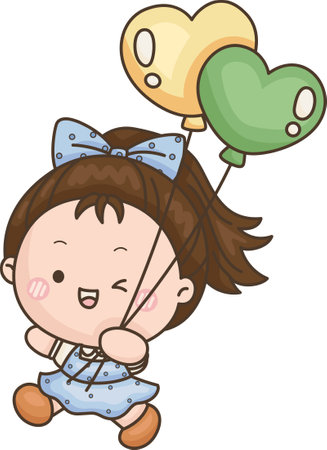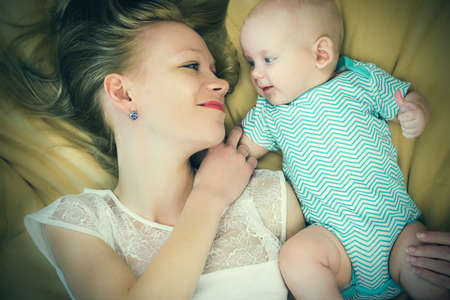1. The Magic Moment: When to Expect Your Baby’s First Smile
There’s nothing quite like the first time your baby smiles at you. It’s a heartwarming milestone that many American parents look forward to with excitement and curiosity. But when does this magical moment usually happen, and why does it mean so much?
When Do Babies Typically Start Smiling?
Most babies start to show their first real social smile somewhere between 6 and 12 weeks old. While every baby is unique, this age range is considered typical for American families and pediatricians. Before this, you might notice little grins or funny faces while your baby sleeps—these are usually just reflexes, not true social smiles.
| Age Range | Type of Smile | What It Means |
|---|---|---|
| 0-6 weeks | Reflexive Smiles | Involuntary, often during sleep; not a response to people |
| 6-12 weeks | First Social Smiles | Your baby begins smiling in response to your face or voice |
| 3 months and beyond | Intentional Smiles | Your baby smiles more frequently and purposefully at people |
The Meaning Behind the First Smile
For many parents in the U.S., that first smile isn’t just adorable—it’s a sign that their baby is starting to connect socially. It reassures moms, dads, and caregivers that their little one is recognizing them and beginning to communicate in their own special way. In American culture, capturing that first smile on camera is almost a rite of passage—those photos often end up on family holiday cards or shared proudly on social media.
Why Is This Milestone So Important?
- Connection: That first smile helps parents feel more bonded with their baby.
- Communication: It shows early signs of social and emotional development.
- Reassurance: Many American families see it as confirmation that their child is growing and developing as expected.
So if you’re eagerly waiting for your baby’s first real grin, know that you’re not alone. It’s a milestone cherished by families across the United States, making all those sleepless nights feel a little more worthwhile.
Understanding Social Smiles vs. Reflex Smiles
It’s an unforgettable moment when your baby flashes that first smile. But did you know not all baby smiles mean the same thing? In the early weeks, your newborn’s grin might just be a reflex. As your baby grows, those smiles become social—real signals of happiness and connection.
What Is a Reflex Smile?
Reflex smiles are those little grins you might see even when your baby is sleeping. These smiles aren’t a response to something funny or loving—they’re simply part of your baby’s early brain activity and physical development. You’ll notice reflex smiles most often in the first few weeks after birth.
How Are Reflex Smiles Different from Social Smiles?
Unlike reflex smiles, social smiles happen when your baby is awake and alert, usually around 6 to 8 weeks old. This is when your baby starts to recognize faces, voices, and even silly sounds—and responds with a big, gummy grin. These first “real” smiles are how your little one begins building connections with you and others.
Spotting the Difference: Reflex vs. Social Smiles
| Type of Smile | When It Happens | What Triggers It | What It Means |
|---|---|---|---|
| Reflex Smile | Birth to about 6 weeks | Random movements or during sleep | Not related to emotions; automatic response |
| Social Smile | 6-8 weeks and beyond | Your face, voice, playful interactions | Genuine response; sign of social engagement and connection |
Why Does This Distinction Matter?
Understanding the difference helps parents tune into their baby’s development. Social smiles are important milestones—they show that your child is starting to connect with the world. If you’re ever unsure whether your baby’s smile is social or reflexive, remember: true social smiles usually happen when your baby is looking right at you, responding to your love and attention. That’s when the magic really happens!

3. What Influences Early Smiling?
Every baby is unique, and the first time your little one flashes a genuine smile can feel like pure magic. But if you’re wondering why your baby hasn’t started smiling yet, or why some babies seem to beam earlier than others, you’re not alone. Let’s break down the key factors that can influence when your baby starts sharing those adorable grins.
Bonding Time and Connection
One of the biggest influences on early smiles is the amount of bonding time a baby has with their parents or caregivers. Babies learn to smile by watching faces and reacting to loving attention. The more you talk, sing, cuddle, and make eye contact with your baby, the more likely they are to respond with an early smile. It’s not just about quantity—quality time matters too. Even small moments, like changing diapers or rocking your baby to sleep, help build connection.
Family Interactions and Environment
The overall vibe at home plays a big role in your baby’s social milestones. If your family is expressive—lots of laughter, talking, or playful faces—your baby might start smiling sooner. Babies soak up what’s around them! On the other hand, quieter households aren’t doing anything wrong; some babies just need more time or different kinds of stimulation.
Common Family Factors That Affect Smiling
| Factor | How It Might Influence Smiling |
|---|---|
| Frequent Face-to-Face Time | Encourages babies to mimic smiles sooner |
| Siblings or Other Kids Around | Extra stimulation may lead to earlier smiles |
| Calm vs. Busy Home Environment | Both are fine; babies adapt at their own pace |
| Diverse Caregivers (grandparents, daycare) | More variety in interactions can offer new social cues |
Infant Temperament: Every Baby Is Different
Some babies are naturally more easygoing or sociable—they might be quick to respond with a smile or giggle. Others are more reserved and take their time observing before reacting. Neither style is better; it’s just part of who they are! So if your friend’s baby smiled at four weeks and yours waits until eight weeks or later, don’t stress—it’s all within the range of normal.
A Quick Look: What Can Influence When Babies Start Smiling?
- Your daily routines: Regular interaction helps babies feel secure enough to express themselves.
- Family culture: Expressive families often see early social milestones.
- Your baby’s temperament: Some babies are born observers—they’ll smile when they’re ready!
- No single “right” way: All these differences mean there’s no perfect timeline for those first smiles.
If you ever feel unsure about your baby’s development, reaching out to your pediatrician for reassurance is always a good idea—but remember, those precious smiles will come in their own time.
4. Encouraging Your Baby’s Social Development
Helping your baby reach social milestones like that first smile is not just exciting—it’s a special way to bond and build trust. American parents often wonder how to support their little ones’ emotional and social growth in everyday life. Here are some practical, culturally relevant tips you can use right at home:
Talk, Sing, and Make Eye Contact
Babies learn through interaction. In the U.S., it’s common for parents to talk to their babies throughout the day—even narrating simple tasks like folding laundry or making breakfast. Singing familiar lullabies, using playful voices, and maintaining gentle eye contact helps your baby feel safe and loved.
Join Parent-and-Baby Activities
Community groups, library storytimes, or “Mommy and Me” classes are popular ways for American families to socialize babies and introduce them to new faces and environments. These activities support both baby’s and parent’s social connections.
Create a Warm, Responsive Environment
Responding quickly when your baby cries or needs comfort builds emotional security. This responsiveness—hugging, cuddling, smiling back—shows your baby that their feelings matter. In American culture, positive reinforcement (like clapping or saying “good job!”) is encouraged even from an early age.
Everyday Ways to Support Social Milestones
| Activity | How It Helps | American Example |
|---|---|---|
| Tummy Time Together | Encourages face-to-face interaction and shared smiles | Laying on a playmat with your baby while singing “Itsy Bitsy Spider” |
| Play Peekaboo | Teaches turn-taking and anticipation of fun social moments | Hiding behind your hands and saying “peekaboo!” during diaper changes |
| Daily Routines with Talk | Makes your baby feel included and valued in daily life | Describing what you’re doing (“Now we put on your socks!”) as you get ready for the day |
| Family Meals Together | Introduces baby to family traditions and group interactions | Sitting together at the dinner table—even if baby isn’t eating solids yet |
Remember: Every Baby Is Unique!
It’s natural for American parents to compare milestones, but remember that every child grows at their own pace. Celebrate each small step—whether it’s a shy half-smile or a full-on giggle—and enjoy the journey together.
5. When Should I Be Concerned? Recognizing Red Flags
As parents, it’s completely natural to wonder if your baby is on track, especially when it comes to those adorable first smiles and other early social milestones. Most babies will start showing social smiles between 6 to 12 weeks old, but remember—every little one is unique! That said, there are some signs that might suggest it’s a good idea to check in with your pediatrician.
What’s Typical—and What’s Not?
It can be comforting to know what’s generally expected and what might warrant a closer look. Here’s a simple table to help you spot the difference:
| Typical Behavior | Might Need Attention |
|---|---|
| Baby starts smiling socially by 2-3 months | No social smile by 3 months |
| Makes eye contact and looks at faces | Avoids eye contact or doesnt watch people’s faces |
| Responds to familiar voices or sounds | Rarely reacts to sounds or voices |
| Enjoys being held and comforted | Seems indifferent or stiff when cuddled |
| Cooing or making happy noises during playtime | Very quiet or unusually fussy most of the time |
If You Notice These Signs…
Don’t panic—babies develop at their own pace, and sometimes they just need a little more time. But if you notice several of these red flags, trust your instincts and reach out to your child’s doctor. Pediatricians are used to answering questions like this every day, and getting advice early can make a big difference if your little one does need extra support.
Your Baby Is Unique!
Every child grows and learns in their own way, so don’t be too hard on yourself (or your baby!) if things don’t happen right on schedule. Often, there’s a wide range of “normal” when it comes to early social milestones. If you have concerns—even if you’re not sure they’re serious—it’s always okay to ask for help. You’re doing great just by caring enough to look out for your baby’s development.
6. Cherishing and Sharing the First Smile
Your baby’s first real smile is one of those magical moments that every parent treasures. In American culture, celebrating milestones like this often means finding special ways to capture and share the joy with family and friends—even those far away. Here are some heartfelt suggestions to help you cherish and share your little one’s first smile:
Capture the Moment
Don’t worry if you don’t catch the very first smile on camera—babies can be unpredictable! But keeping your phone or camera nearby during playtime can help you snap a sweet photo or video when it happens again. These candid shots make wonderful keepsakes for years to come.
Ways to Memorialize Baby’s First Smile
| Memorializing Idea | Description |
|---|---|
| Photo Album | Create a digital or printed album dedicated to milestones, starting with the first smile. |
| Milestone Cards | Use milestone cards that say “Today I Smiled!” and take a photo with your baby holding it. |
| Memory Journal | Write down the date, what made your baby smile, and how you felt in a keepsake journal. |
| Shadow Box | Add a picture along with a small toy or outfit from that day into a shadow box frame. |
Sharing Across the Miles: American Traditions
For many families in the U.S., loved ones may live far apart, but sharing big moments is still important. Here are some popular ways parents connect:
- Email Updates: Send out a “smile alert” email with photos to grandparents, aunts, uncles, and close friends.
- Group Texts or Family Chats: Share snapshots instantly in group messages using apps like iMessage, WhatsApp, or Facebook Messenger.
- Social Media Announcements: Post your favorite smiling photo on Facebook or Instagram with a fun caption—many families love using hashtags like #FirstSmile or #BabyMilestone to mark the occasion.
- Video Calls: Schedule FaceTime or Zoom calls so loved ones can see your baby’s new grin in real time!
- Printed Photo Cards: Mail out milestone postcards or prints—a classic American tradition for sharing special news with relatives who may not use digital media.
A Little Tip from Experience
Every family has their own style of celebrating. Whether you’re all about digital albums or love sending handwritten notes, what matters most is making memories and letting those who care about you join in the happiness. Even if the moment feels small, these early smiles become cherished stories you’ll tell for years to come!


